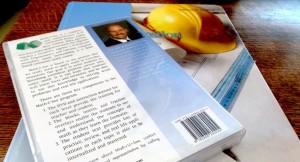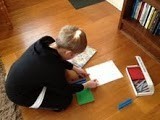A few years ago, after enduring a handful of math programs that did not work for our home school family, I began teaching from Math-U-See and breathed a sigh of relief. Thanks to Math-U-See, I became a proficient math instructor and my children started enjoying numbers. So much that we lived to tell about it . . .
Author and founder, Steve Demme, implements three key components in his program:
- Unique instructional videos and manuals for teacher and students
- Manipulatives such as blocks and fraction overlays for hands-on learning
- Student text with practice, review, and real life applications
Before every new lesson teachers review video and written instruction by Steve Demme. Mr. Demme’s instruction is clear and concise, he utilizes manipulatives for visual learners, explains how math skills apply to real life and incorporates an arsenal of tricks to master difficult concepts.
Students usually watch Mr. Demme’s instruction video with their teacher. They are privileged to watch a veteran math teacher who is outstanding at explaining primary to higher level mathematics. The video, teacher’s manual and kinesthetic (hands-on) learning are excellent elements of Math-U-See. Students master the presented math in about a school week (depending upon the child and the difficulty of the concept), by completing student and online worksheets. Completing the first daily worksheet together helps home schoolers discover confusing steps in the math process. Students progress after mastery with a test or lesson evaluation.
Steve Demme reminds us of how well this learning process works. He reiterates Confucious’s words, “Tell me, I forget. Show me, I understand. Let me do it, I will remember.” He also recommends that students “reteach” the concept and adds, “Let me teach it and I will have achieved mastery!”
Math-U-See offers a unique approach to teaching math. Rather than teaching several math concepts in one grade level, Math-U-See requires mastery of one concept (and review of earlier concepts) in thirty lessons. For example, students master fractions in approximately one school year, before they study decimals. Younger children spend a school year mastering addition before they learn to subtract.
Steve’s solid background in math education helps parents, like me, who are not naturals at numbers. Now that I am teaching from Math-U-See I understand concepts I never understood before. Steve explains why certain numbers and operations are being used. Do you know why 3.14 (pi) is used to measure the area of a circle? After learning with Math-U-See, I discovered the answer and was excited to explain pi to my children.
My third grade son is learning how double digit multiplication can help him multiply large orders of items in an occupation someday. He recommends Math-U-See because “The videos make multiplying clear to me.” My eighth grade student likes Math-U-See because, “The program applies math to real life. Although we perform drills in Math-U-See we also get to answer story problems that apply to real life and that makes math more interesting.”
Everything about Math-U-See is interesting. It will be our curricula provider from counting to calculus, and everything in between.
Have you seen the wonderful Math Resources from our Curriculum Choice authors?
~written by Julia



We also started using MUS this year. I was really afraid to use it, since English is not our first language. But my oh my, how surprised was I. The kids absolutely love it. They love Math and they love the way MUS is taught.
I just wished we started with it earlier and we will continue with it up to the end.
I felt the same way, Maryna, when we started Math-U-See. I wished that we had started using it at the beginning of our homeschool journey, because it makes math enjoyable and less difficult.
I was thinking of switching to MUS. I was wondering how to make the transition where it is so different. Is it hard for the ones who started doing other programs to switch over? One of my sons should be starting 4th grade this year. I pulled him out of public school last year where he supposedly was doing fine educationally, we just had issues with the environment. I got horizons and found out he didn’t really know his addition facts so we had to back up and it has us kind of behind. I was wondering how to begin, if I should back him way up and try MUS from basic addition or is it ok to jump into it mid stream?
Hi Holly,
Switching to Math U See is a snap! If you go to http://www.mathusee.com, Steve offers placement tests for your children. Your son should take the placement test for the level that focuses on addition. If your 4th grader is struggling with adding skills, but he’s already touched multiplication and division, don’t worry. The placement test score will probably show you that your son should go back to addition, but I recommend going through thirty lessons very quickly (one quarter). If he needs work in subtraction, the placement test will reflect that, as well. He’ll probably move through that level quickly too. Finally, by next school year in sixth grade he’ll cruise through multiplication and division (as he’s already worked on those skills). The bottom line? Your 4th grader will catch up in Math U See rather quickly and he will be where most of his peers are in no time. Math U See is amazing.